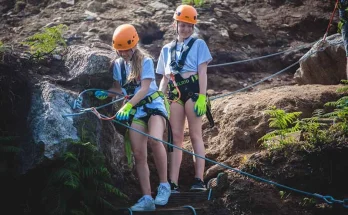Capturing breathtaking moments in nature is an incredibly gratifying experience. Whether it’s witnessing the speed and agility of a predator or watching a newborn calf, these memories will last a lifetime.
But capturing those breathtaking landscapes is not always easy. Fortunately, there are some tricks you can use to enhance your landscape photography.
Choosing the Right Lens
Choosing the right lens for landscape photography is essential to capture stunning scenes that tell a captivating story. A wide-angle lens helps to capture expansive landscapes, while a telephoto lens is great for isolating specific elements within a scene. The key is to choose a lens that provides sharpness and minimizes chromatic aberration to ensure images are crisp and clear from edge to edge.
Similarly, the right lens can make or break wildlife photos. It’s important to consider an animal’s environment, such as their habitat or a nearby watering hole. Additionally, it’s vital to experiment with angles and perspectives when photographing wildlife, as the subtle details of an animal’s face can often be more captivating than a full-body shot.
With practice, you’ll be able to select the best lenses to suit your unique creative vision. Keep in mind that curating a collection of lenses is a personal journey, and every photographer has their own preferences and shooting styles.
Choosing the Right Camera
Whether you’re new to landscape photography or a seasoned pro, the type of camera you choose makes all the difference. It goes beyond resolution, although the size of your camera’s sensor is still important – as are features like dynamic range and weather sealing.
Serious wildlife photographers spend a lot of time learning about the species they’re after, which helps them predict their behaviour and where to find them. This is important as, while you might be lucky to stumble across a wildlife moment by chance, it’s usually best to be prepared.
It’s also worth remembering that you don’t need a telephoto lens to take great wildlife photos. In fact, wide-angle lenses can be very effective at capturing wildlife that feels part of its environment. Finally, focus on capturing the animal’s eyes to convey emotion and create a connection with the viewer. The shutter noise can often spook animals, so consider using your camera’s silent shutter function.
Choosing the Right Location
Whether you’re an experienced landscape photographer or just starting out, it’s essential to understand the fundamentals of exposure and composition. This way, you can be prepared to make critical adjustments as needed to capture fleeting moments.
Another crucial aspect to master is location. It’s important to get off the beaten path and explore lesser-known areas for unique, undiscovered nature landscapes. Additionally, it’s often beneficial to visit the same landscape at different times of day to see how lighting conditions change the scene.
Social media and photography forums can also be a great resource when searching for landscape photo locations. Many photographers are willing to share their favorite spots online, so be sure to check out these resources when you’re looking for inspiration. Additionally, some of these sites offer detailed information about the terrain features and elevation changes that can help you plan for a shot.
Choosing the Right Time
The right timing of a landscape or wildlife moment can make all the difference. Whether capturing the soft glow of the Golden Hour or the magical mystery of the Blue Hour, mastering natural lighting techniques can unlock a world of opportunities for your photography.
Experiment with different angles to add a creative flair to your shots. For example, shoot from a lower perspective to emphasize an animal’s stature or use a wide aperture to produce a delightful bokeh effect. Also, keep in mind the Rule of Thirds, which suggests positioning important elements in your shot along one of the horizontal or vertical lines.
While shooting in nature, it is essential to respect the environment by upholding the principle of “Leave No Trace.” This means packing out all trash, even biodegradable items like fruit peels or cores, and staying on established trails to prevent causing damage to plants or disrupting wildlife habitats. It is also important to respect the privacy of individuals and not photograph them without their consent.




